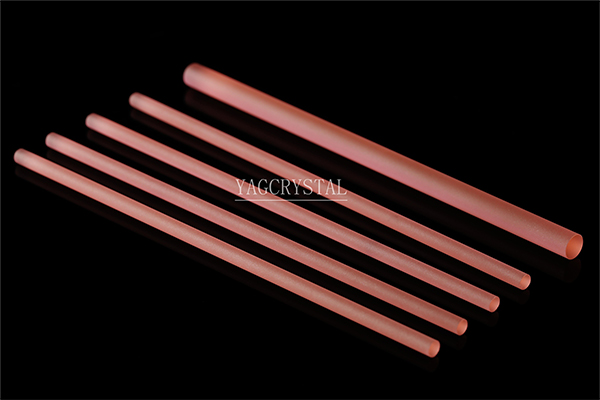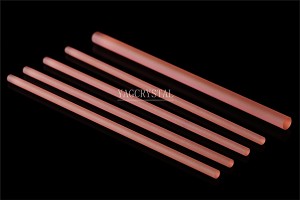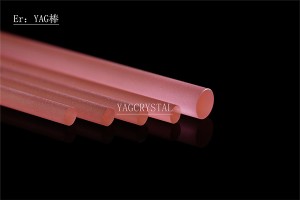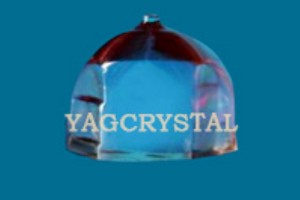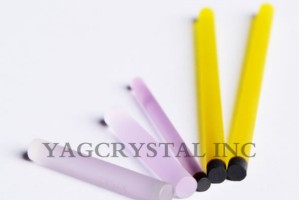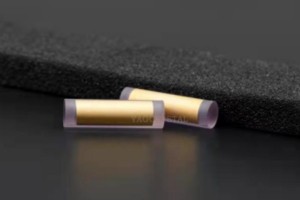Er: YAG –An Excellent 2.94 Um Laser Crystal
Product Description
This activity reviews the indications and technique for Er:YAG laser skin resurfacing and highlights the role of the interprofessional team in evaluating and treating patients who undergo Er:YAG laser resurfacing of the skin.
Er: YAG is a kind of excellent 2.94 um laser crystal, widely used in laser medical system and other fields. Er: YAG crystal laser is the most important material of 3nm laser, and the slope with high efficiency, can work at room temperature laser, laser wavelength is within the scope of the human eye safety band, etc.
2.94 um Er: YAG laser has been widely used in medical field surgery, skin beauty, dental treatment.Lasers powered by Er:YAG (erbium substituted: yttrium aluminium garnet), operating at 2.94 microns, crystals couple well into water and body fluids. This is especially useful for applications in the fields of laser medicine and dentistry. The output of Er:YAG enables the painless monitoring of blood sugar levels, while safely reducing the risk for infection. It is also effective for laser treatment of soft tissue, such as cosmetic resurfacing. It is equally useful for treating hard tissue such as tooth enamel.
Er:YAG enjoys an advantage over other laser crystals in the 2.94 micron range in that it employs YAG as the host crystal. The physical, thermal and optical properties of YAG are widely known and well understood. Laser designers and operators can apply their depth of experience with Nd:YAG laser systems to achieve superior performance from 2.94 micron laser systems using Er:YAG.
Basic Properties
| Coefficient of Thermal Expansion |
6.14 x 10-6 K-1 |
| Crystal Structure | Cubic |
| Thermal Diffusivity | 0.041 cm2 s-2 |
| Thermal Conductivity | 11.2 W m-1 K-1 |
| Specific Heat (Cp) | 0.59 J g-1 K-1 |
| Thermal Shock Resistant | 800 W m-1 |
| Refractive Index @ 632.8 nm | 1.83 |
| dn/dT (Thermal Coefficient of Refractive Index) @ 1064nm | 7.8 10-6 K-1 |
| Molecular Weight | 593.7 g mol-1 |
| Melting Point | 1965°C |
| Density | 4.56 g cm-3 |
| MOHS Hardness | 8.25 |
| Young’s Modulus | 335 Gpa |
| Tensile Strength | 2 Gpa |
| Lattice Constant | a=12.013 Å |
Technical Parameters
| Dopant concentration | Er: ~50 at% |
| Orientation | [111] within 5° |
| Wavefront Distortion | ≤0.125λ/inch(@1064nm) |
| Extinction Ratio | ≥25 dB |
| Rod Sizes | Diameter:3~6mm, Length:50~120 mm |
| Upon request of customer | |
| Dimensional Tolerances | Diameter:+0.00/-0.05mm, |
| Length: ± 0.5mm | |
| Barrel Finish | Ground Finish with 400# Grit or polished |
| Parallelism | ≤10" |
| Perpendicularity | ≤5′ |
| Flatness | λ/10 @632.8nm |
| Surface Quality | 10-5(MIL-O-13830A) |
| Chamfer | 0.15±0.05mm |
| AR Coating Reflectivity | ≤ 0.25% (@2940nm) |
Optical And Spectral Properties
| Laser Transition | 4I11/2 to 4I13/2 |
| Laser Wavelengtha | 2940nm |
| Photon Energy | 6.75×10-20J(@2940nm) |
| Emission Cross Section | 3×10-20 cm2 |
| Index of Refraction | 1.79 @2940nm |
| Pump Bands | 600~800 nm |
| Laser Transition | 4I11/2 to 4I13/2 |


